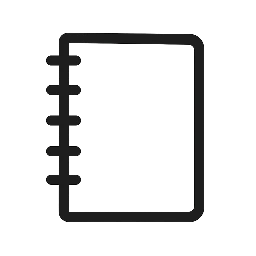Entry type 86 is a classification used in various systems to identify a specific category of data or transactions. It helps organizations organize and process information efficiently by providing a clear label for this particular entry.
The primary function of entry type 86 is to streamline data handling by distinguishing these entries from others, ensuring accurate tracking and reporting. Understanding this classification can simplify workflows and improve overall system management.
Readers interested in system organization or data processing will find value in exploring how entry type 86 fits into larger frameworks and why it matters in practical applications.
Understanding Entry Type 86
Entry Type 86 involves specific regulatory and procedural aspects governing its use. It applies to defined scenarios with clear eligibility rules and targeted purposes.
Definition and Purpose
Entry Type 86 refers to a distinct classification used mostly in customs and immigration contexts. It designates a special category for individuals or goods requiring particular entry protocols.
Its main purpose is to streamline processing for cases that do not fit standard categories, enabling authorities to apply precise controls. This classification often denotes limited or conditional access, distinguishing it from general entry types.
Primary Use Cases
Entry Type 86 is primarily used for temporary stays or special imports that demand additional scrutiny. Examples include diplomatic personnel, temporary workers with unique permits, or sensitive shipments subject to enhanced checks.
It can also apply in situations involving security clearances or quarantine requirements. This type ensures that those entries are monitored differently than routine admissions, managing risk and compliance effectively.
Eligibility Criteria
To qualify under Entry Type 86, applicants or items must meet strict prerequisites. These often involve legal documentation proving the specialized status or purpose, such as official letters, permits, or certifications.
Applicants must comply with all conditions tied to this category, including limited duration or restricted activities. Failure to meet eligibility may lead to denial or reclassification under another entry type.
Entry Type 86 Procedures
Entry Type 86 requires strict adherence to certain formalities and steps to ensure acceptance. The process involves providing specific documents, completing the application properly, and complying with relevant regulations.
Required Documentation
Applicants must submit a valid passport with a minimum of six months’ validity beyond the intended stay. A completed Entry Type 86 application form, signed and dated, is also mandatory.
Supporting documents include a recent passport-sized photograph and proof of financial means, such as bank statements covering the prior three months. Depending on the applicant’s purpose, a letter of invitation or sponsorship may be required.
All documents must be originals or certified copies, submitted in English or accompanied by certified translations. Failure to provide complete documentation typically results in delays or rejection.
Application Process
The application must be submitted online or at designated service centers authorized for Entry Type 86 processing. The completed form should be carefully reviewed to avoid errors or omissions.
Applicants must pay the non-refundable processing fee upon submission, which varies based on nationality and processing speed. A receipt of payment serves as proof during later stages.
Interview appointments may be scheduled if further verification is needed. Processing times generally range from 7 to 21 business days but can extend if additional information is requested.
Compliance and Regulations
Entry Type 86 holders must comply with the specific entry conditions attached to their status. Any breach, such as unauthorized employment or overstaying the permit, results in penalties including fines or removal from the country.
Regular updates on status and timely renewals are essential to maintain compliance. Submission of biometric data is required during the initial application and renewal processes.
Authorities conduct random checks on Entry Type 86 permits to verify authenticity and adherence to the terms. Failure to meet compliance requirements can impact future visa applications.


Leave a Reply